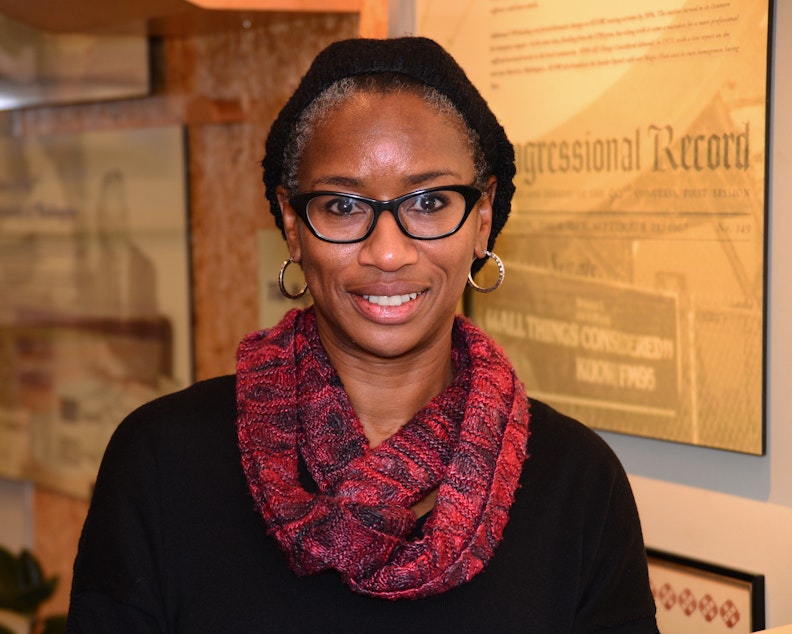Is The UW A Safe Space For Students Of Color?

Walk onto the University of Washington's Red Square and you are greeted by a giant statue of George Washington. A lot of students walk past that statue barely aware it's there.
But UW senior Palca Shibale told KUOW’s Bill Radke that Red Square is one place – but not the only one on campus – where she feels erased as a student of color.
Shibale, who is studying molecular biology, helped organize a rally last week in solidarity with students at the University of Missouri who protested the handling of racist incidents on campus.
Shibale noted that George Washington was a slave owner. The statue, she said, makes the campus “a very daunting place because you're walking into a predominantly white institution and you're already starting to face hostility.”
She said black students feel the UW doesn’t do enough to make them feel safe on campus. She told of a march past fraternity houses earlier this year. “We were called the racial slurs, the N-word. We were told, 'Go back to Africa.' We were called monkeys,” she said.
Sponsored
“People often think that these stories are isolated incidents. But if you talk to black students at the University of Washington, it's a very, very dominant thought.”
She acknowledged that the university has the new Center for Communication, Difference and Equity to help address black students’ experience. But efforts can’t end with physical spaces, she said.
“It's not enough just to say we're going to create a safe space and that's the end of it,” she said. “You need to have diversity with equity.”
In April, UW President Ana Mari Cauce launched an initiative to fight racism and promote equity. “Current events across the country, in our state and even on our campus illustrate that we have more work to do,” she said in a statement announcing the initiative.
UW associate history professor Stephanie Smallwood, who works with the Center for Communication Diversity and Equity, said concerns of students like Shibale must be taken seriously.
Sponsored
“When black and brown students have to protest around safe space, it means that it's a wake-up call for us. It means that we have failed them, arguably several times over,” Smallwood said.
She said racial microaggressions now are a norm rather than an exception – and she said that word shouldn’t be taken to mean just minor offenses.
“The microaggression for our black and brown students is when we actually, really legitimize a debate about use of the N-word under the guise of free speech. When we legitimize the idea that there can be a good reason for someone to wear blackface for Halloween under the guise of freedom of speech,” she said. “That's the kind of thing that for students is a microaggression.”
So what can Washington’s largest public university do? First, recognize the size of the problem, she said.
“Why are they marching in solidarity with Mizzou? Because they realize that it's not just at UW. Whether they're here, whether they're at Mizzou, whether they're at one of the most elite universities in the country, Yale, the same problems are manifesting,” she said.
Sponsored
These interviews are part of a continuing conversation on KUOW about racial issues on campus.


